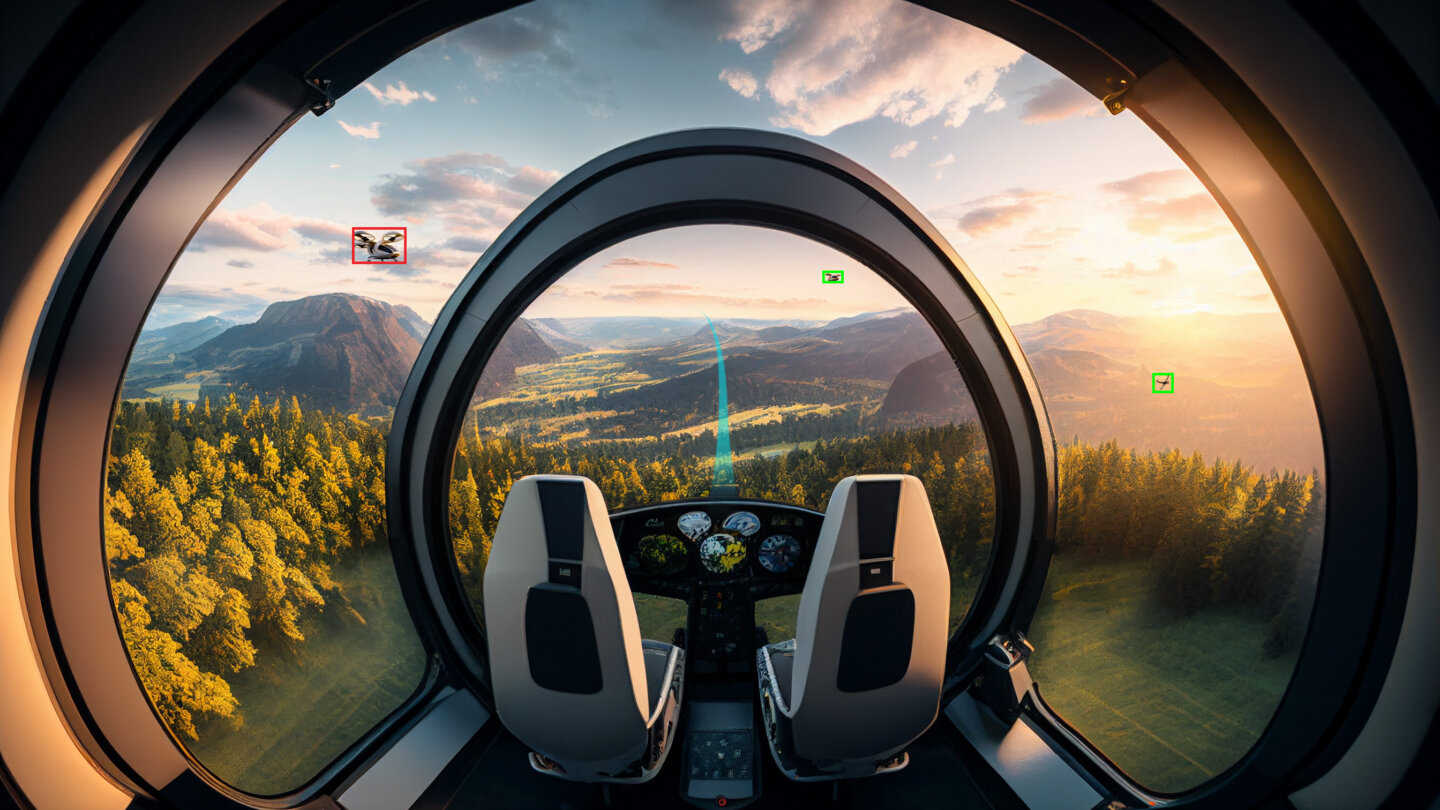The steps to autonomous flight: How machine learning is shaping the sky’s future
There is hardly an industry in the world that is not investigating how to best integrate the latest technologies into their operations. Doing so is essential for remaining competitive and adapting to the ever-rising bar of digital expectations from consumers and stakeholders alike. The civil aviation industry is no different, with areas of innovation including fuel-efficient aircraft designs and advanced navigation systems.
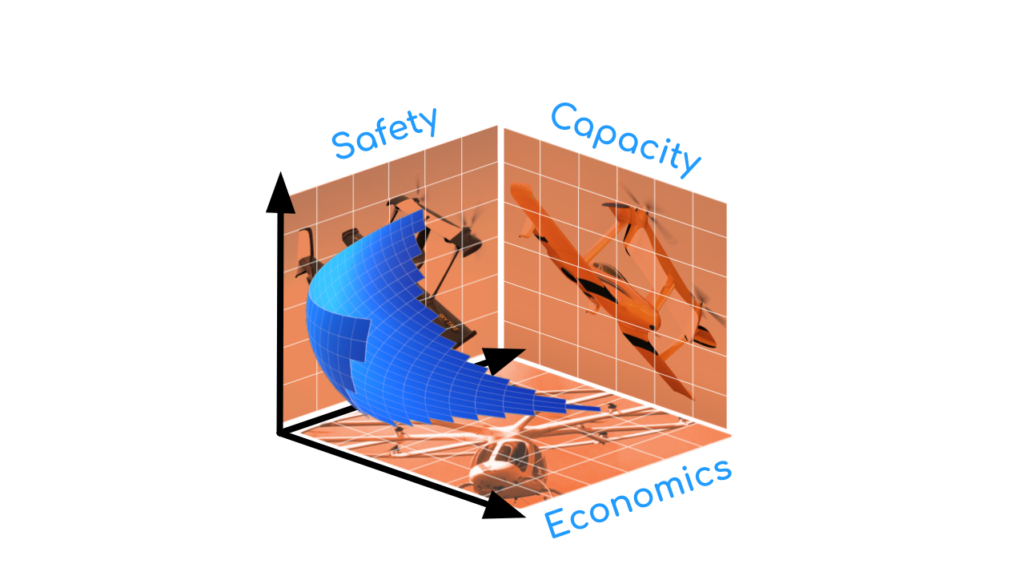
Source: Daedalean AI
However, there is a prevailing thought in the industry that existing technology can improve any of the variables of safety, cost, and capacity – but only ever at the expense of at least one of the others. Progressing in all three simultaneously will involve bringing brand new technology to the cockpit, largely agreed to be machine learning (ML). Applications based on ML will be able to take over many of the manual tasks currently undertaken by today’s pilots, including navigation, flight control, and situational awareness.
In fact, such systems are already being developed, and aviation regulators are reviewing the first of them for certification. This is no mean feat, as the introduction of novel methods requires novel certification processes to assess software safety and fitness for purpose. For example, the European Union Aviation Safety Agency (EASA) worked with aviation technology company Daedalean to publish reports that led to the documentation describing the new means of compliance for the developers of ML-based applications in the industry.
In many industries, progress in ML technology has also brought about the concern that eventually the jobs of working people will be replaced. In aviation, it is the human pilots, who dedicate years of their lives and thousands of dollars to their training, that fear this the most.
However, imagining these systems will fly fully autonomously from day one is a huge misconception. We are decades away from that reality, as there is still much work to be done regarding regulatory approval and reassuring consumers and stakeholders of the technology’s safety. Those years will also gradually see the pilot’s role evolve as more responsibility is shifted towards machines.
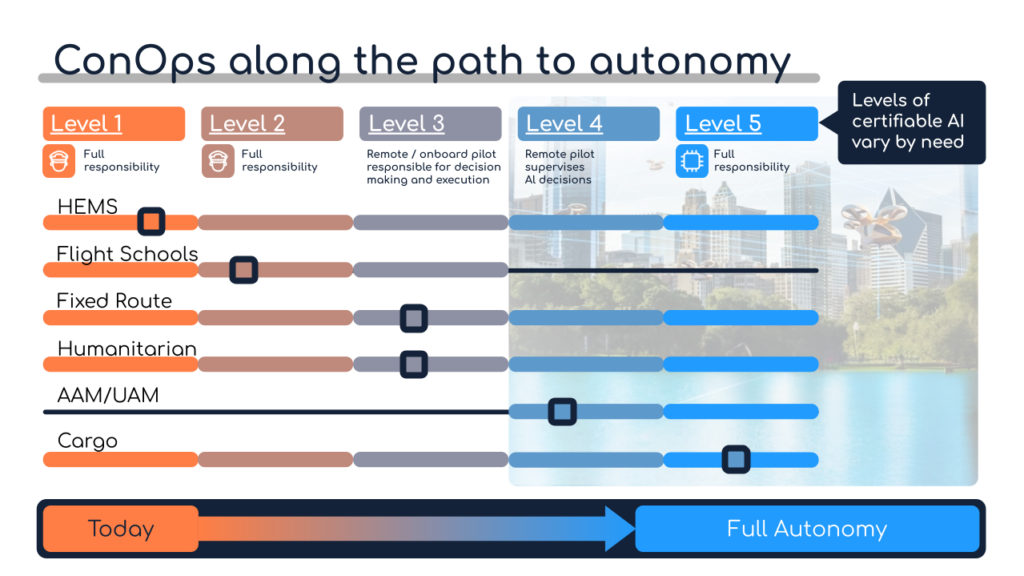
Source: Daedalean AI
Level 1: Task assistance
This is the stage we are at currently, where pilot assistance tools augment the human pilot in the cockpit. The system helps with situational awareness, acting as a co-pilot that monitors the environment. This is particularly helpful in search-and-rescue missions and emergency goods delivery, as it allows the pilot to divert more of their attention to the primary goal while the system puts an extra set of eyes on potential hazards. Other uses can include air traffic detection independent of transponders, landing guidance onto runways and helipads, and positioning in GPS-denied environments with an onboard map. Full responsibility for flight remains with the human pilot.
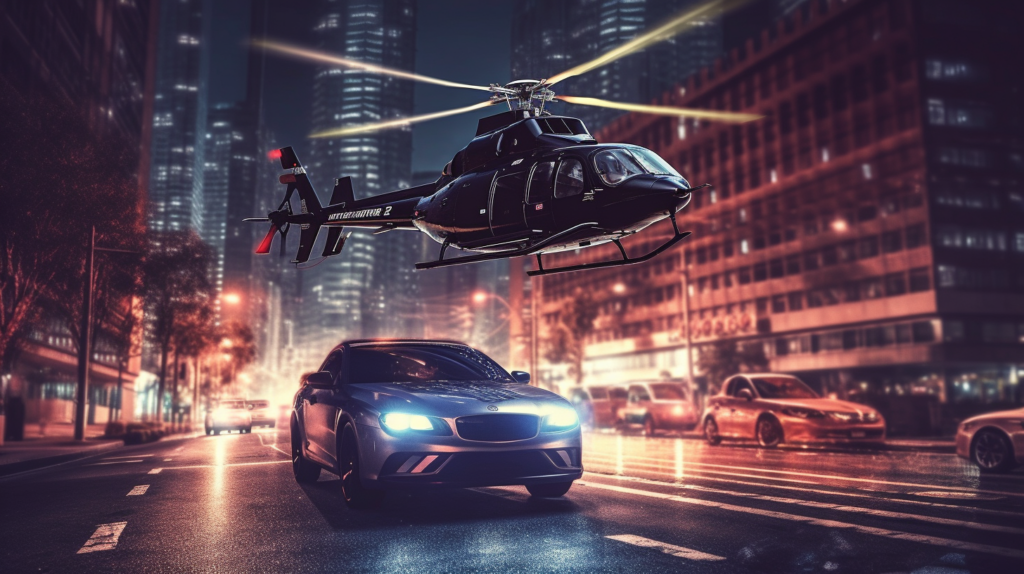
Source: Daedalean AI
Level 2: Partially automated
This is where a system assists the pilot by forecasting risks and offering mitigation strategies. For example, it could alert them that the weather in their destination may have worsened significantly by the time they arrive and offer an avoidance manoeuvre. Again, full responsibility for flight remains with the human pilot. Partially automated systems have the potential to make pilot training, which currently is estimated to cost about $100,000, more accessible by reducing the demand for extensive flight training hours and costly simulator sessions.
Level 3: Highly automated
Flying at Level 3 will involve the ML system pulling the actuation levers and fully guiding the aircraft to its destination using the flight plan for a fixed route. However, a human pilot, who will either be on-board or supervising the flight remotely, will remain responsible for decision-making and the flight’s overall execution. They will be able to override the system if necessary, but their primary role will be monitoring the aircraft to ensure everything is going as intended. It is anticipated that civil aviation will reach this stage within the next five to ten years. Flights for humanitarian work, for example, flood rescue missions or extinguishing forest fires, will be made safer with this as no human has to risk their life on board.
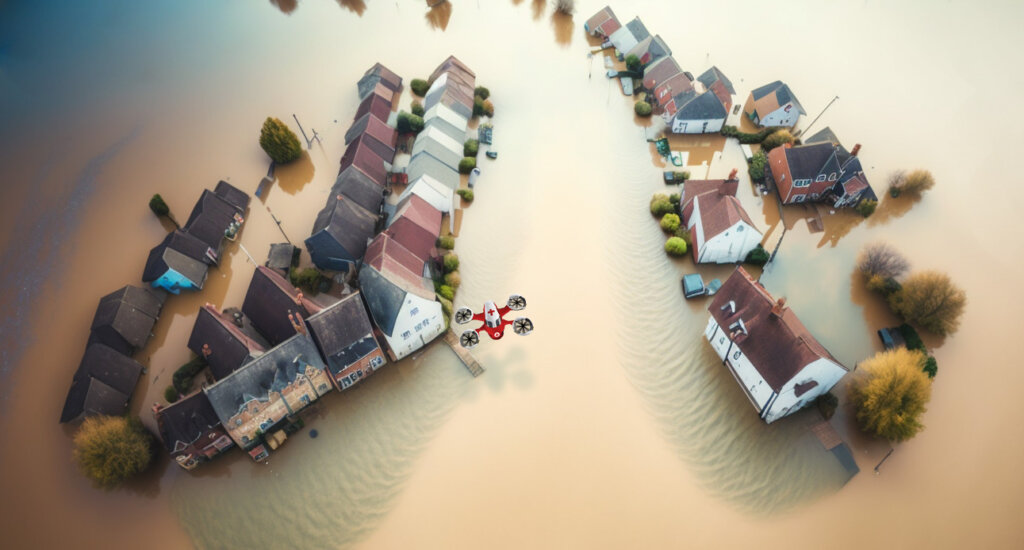
Source: Daedalean AI
Level 4: Fully automated
This stage will see all decision-making allocated to the ML system, while the pilot’s role will be only of flight supervisor. Aircraft will no longer communicate with ground control as it is much quicker for their onboard computers to share their position and intentions directly with each other far beyond current ADS-B. Fully automated systems will make urban air mobility through air taxis a possible reality, the enabler being the self-separation of aircraft in the air. This will allow for the change of the current flight rules to permit about a dozen aircraft over a city of the size of London.
All this shared data, including new routes and intentions, will be provided to the on-ground supervisor. While normal execution is left to the ML system, the supervisor retains the ability to interfere with its decisions. But as such occurrences become increasingly rare as technology advances, they will gain the capacity to oversee the safe travel of a fleet of aircraft, rather than just one, at any one time.
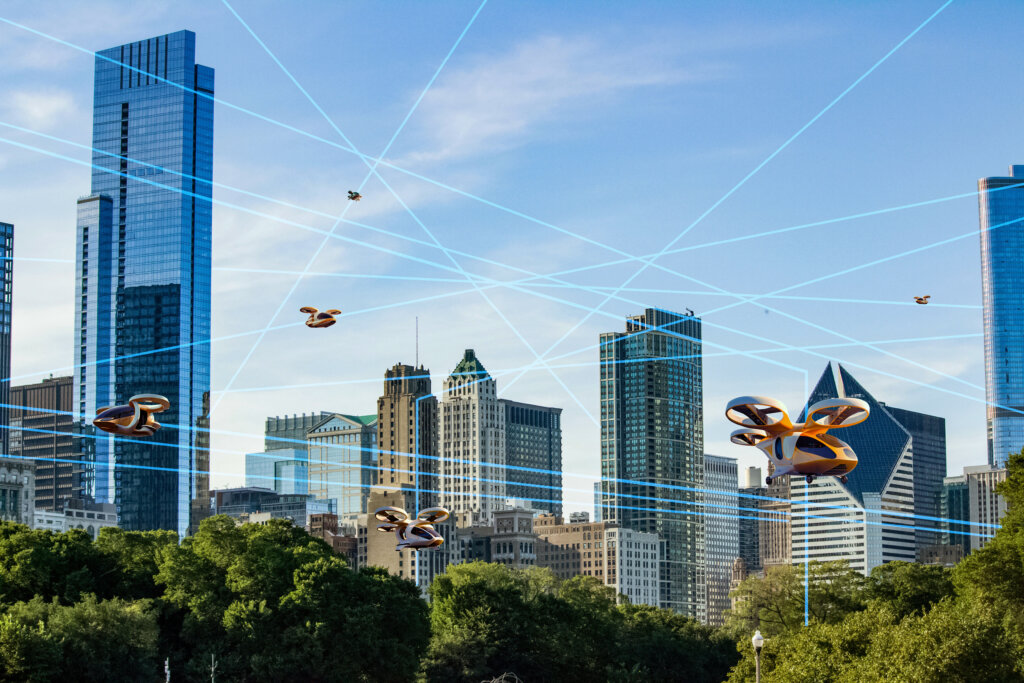
Source: Daedalean AI
Level 5: Autonomous
Only at Level 5 will an ML system pilot aircraft without any human fallback, with passengers trusting to fully autonomous vehicles. By this time, the public and regulating bodies will have gained enough experience with ML piloting systems, which would have gradually taken over more cockpit responsibility, to feel comfortable on autonomous flights. The safety benefits of reducing instances of human error should also have been clearly communicated throughout. While it has many use cases, like delivering cargo to remote or environmentally fragile sites, full autonomy may not be appropriate for every mission. For example, certain operational flights might necessitate human judgment due to rapidly changing and unpredictable situations or ethical decisions that need to be made. It is predicted we will reach Level 5 in the 2040s.
Ultimately, the pilot’s role is so much more than pushing buttons and moving the yoke. They must sustain awareness of the state of the aircraft and the airspace, draw conclusions, anticipate risks, and decide how to address problems. Although technology will take over many repetitive pilot tasks, it will also create opportunities for more pilots because the bar to enter the profession will be lower. Therefore, more passengers will be able to take to the skies too.
Nevertheless, there is still a long way to go before pilots, as well as the public and regulators, trust technology to take on the challenges of flight safely. Much of the technology capable is already developed, but only after it is proven to be safe and gains complete public acceptance will full autonomy win its position in passenger air mobility.






